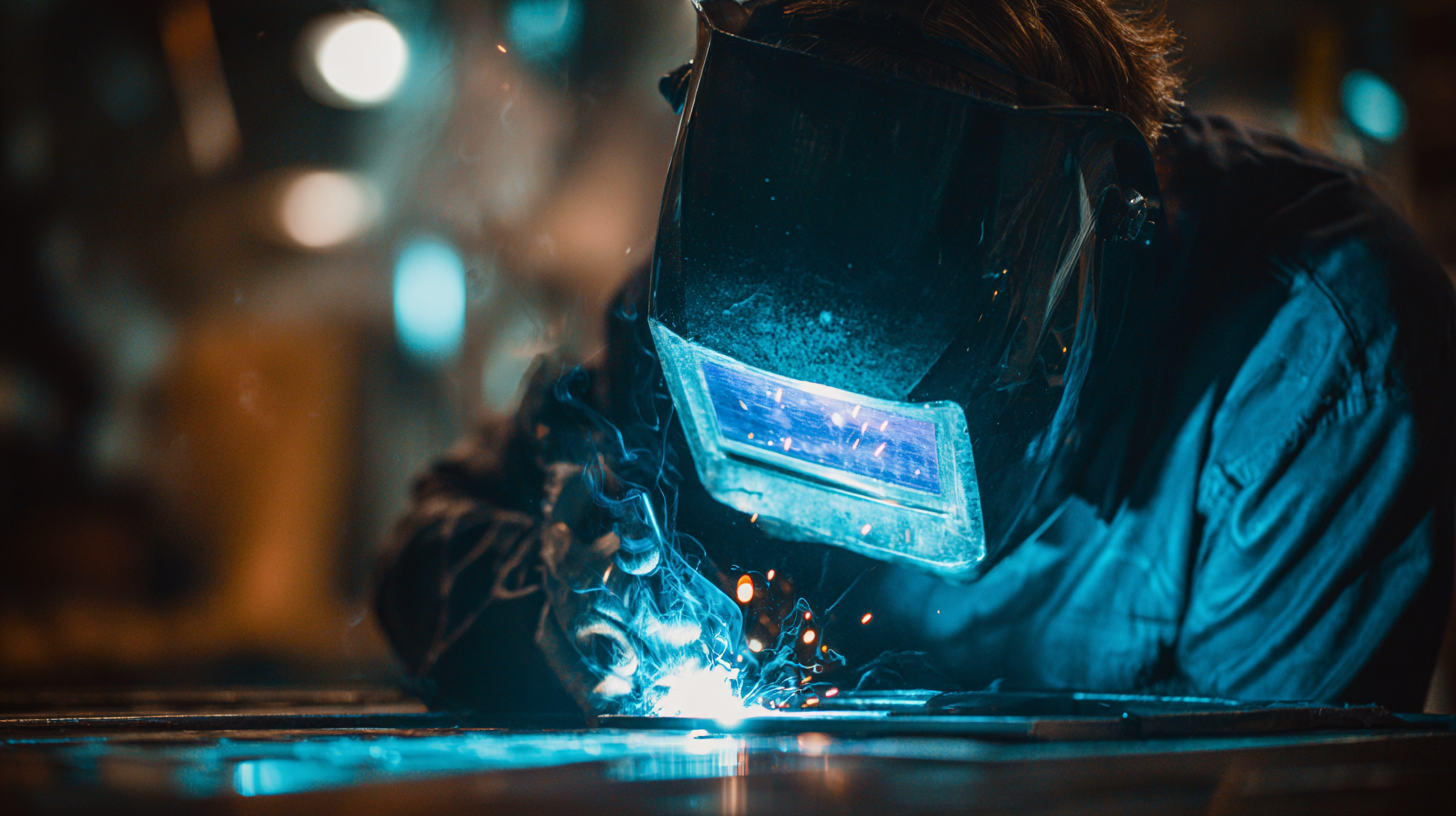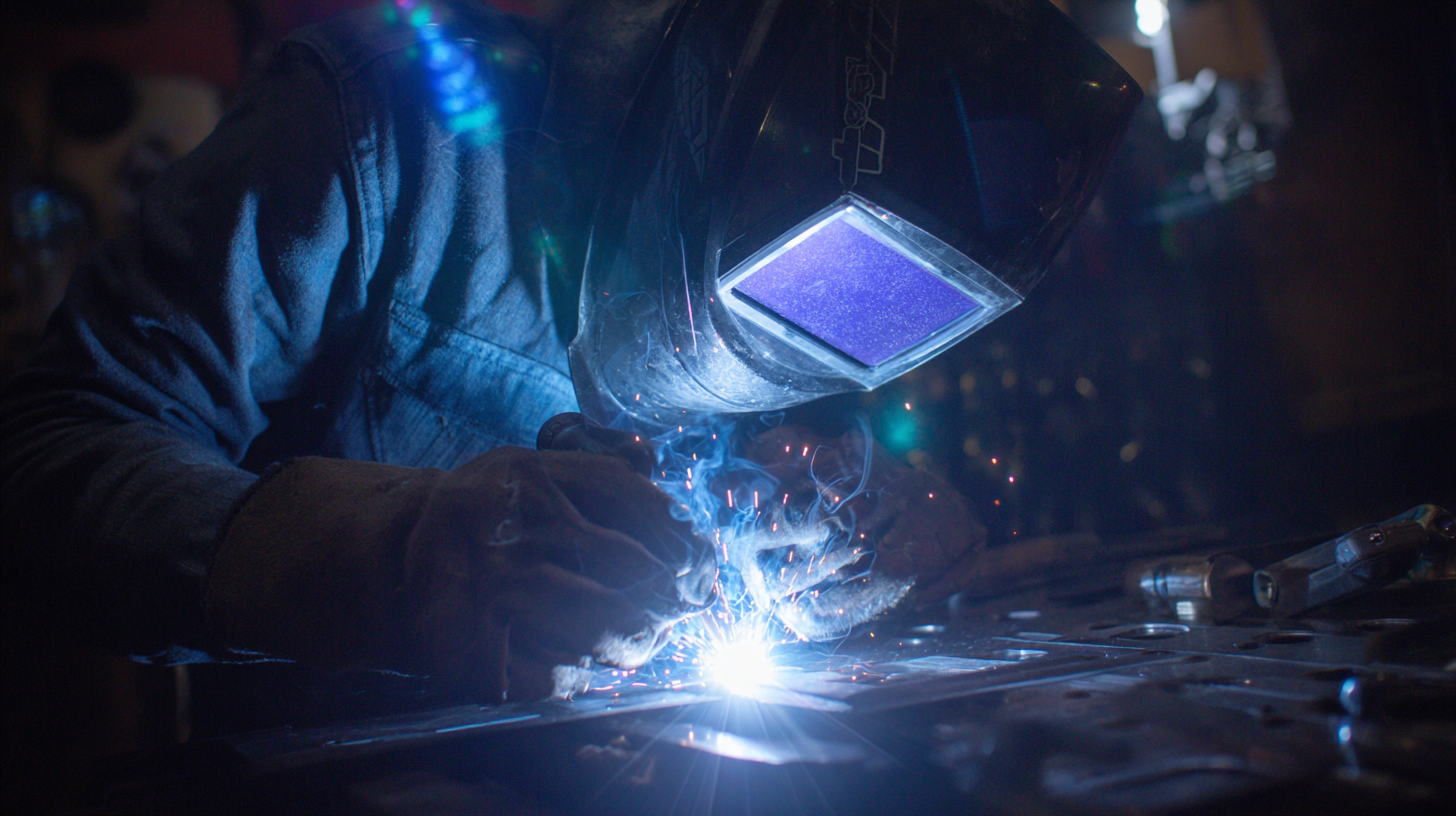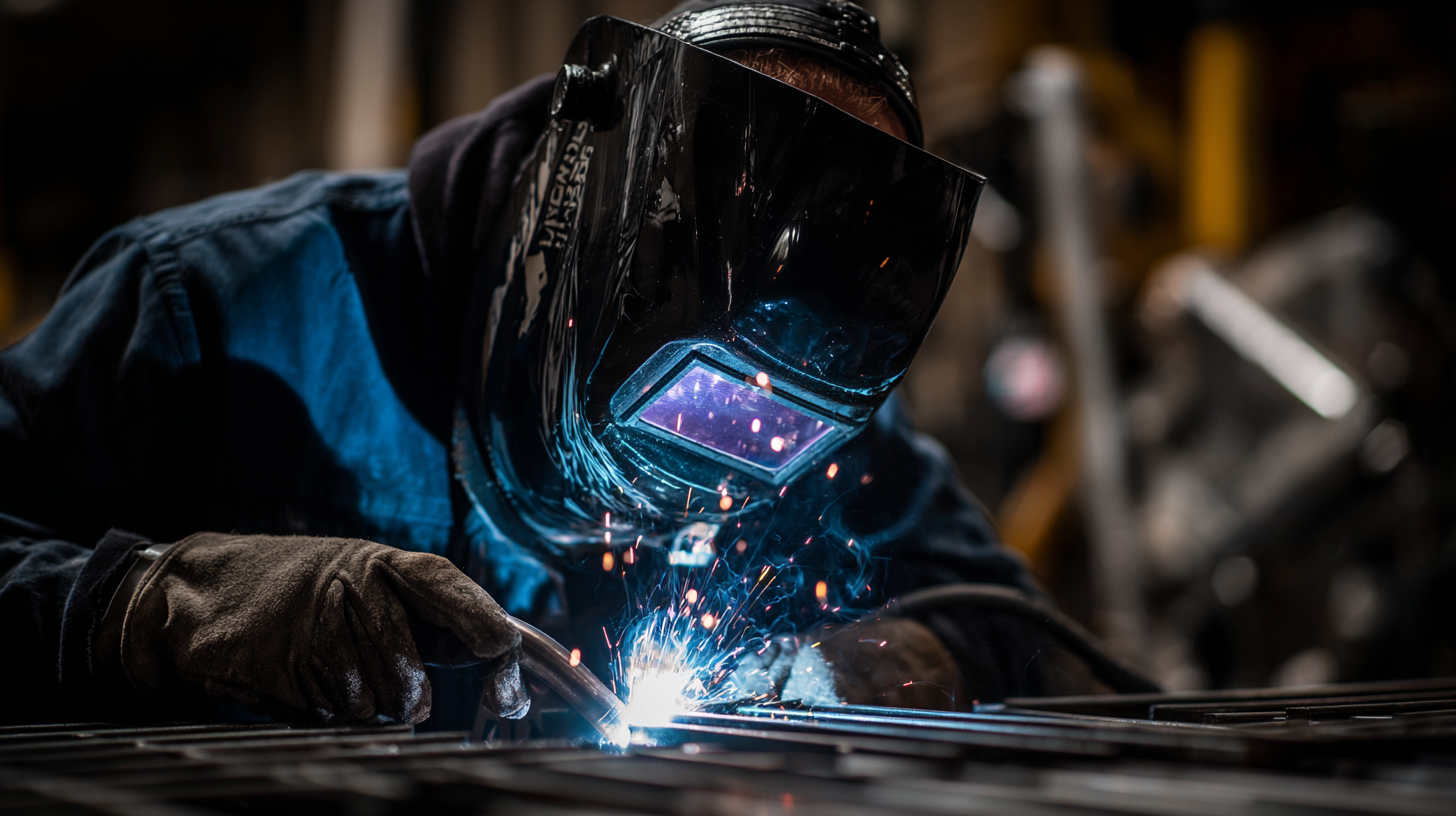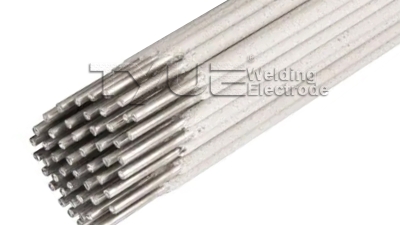Exploring Innovative Techniques for Welding Cast Aluminum Alternatives
Table of Contents
- The Importance of Alternative Alloys in Modern Welding Applications
- Key Challenges in Welding Cast Aluminum: Addressing Common Issues
- Innovative Techniques: Laser Welding and its Impact on Efficiency
- Comparative Analysis: TIG vs. MIG Welding for Cast Aluminum Alternatives
- Future Trends: Advancements in Materials and Welding Technologies
- Case Studies: Successful Applications of Innovative Welding Techniques
- Essential Guide to AWS/ASME 5.3 E 4047 Aluminum Welding Electrodes: Choosing the Right Arc Welding Stick for Your Projects
- FAQS
- Conclusion
- Related Posts
When we look at today’s manufacturing scene, it’s pretty clear that there's a big push for lightweight yet strong materials. Aluminum has become a real favorite—especially in industries like automotive and aerospace—because it checks both boxes. If you look at the latest reports, like one from Research and Markets, they’re saying the global aluminum market might hit over $200 billion by 2025. And a good chunk of that growth is driven by cast aluminum applications. Companies like Wenzhou Tianyu Electronic Co., Ltd., which has been at the forefront of welding electrodes and consumables since 2000, are constantly trying to keep up with these industry changes. That’s why new techniques for welding cast aluminum or alternatives are more important than ever. In this blog, I want to dig into some of these innovative methods—things that can help manufacturers make stronger, more efficient products—and tackle the tricky parts of welding non-ferrous metals like aluminum. Keeping up with these advancements is pretty critical for industries that want to stay competitive and offer better products in a fast-changing world.

The Importance of Alternative Alloys in Modern Welding Applications
You know, the role of alternative alloys in modern welding isn’t something we can overlook. As industries push to boost performance and cut costs, more and more folks are turning to cast aluminum alternatives that pack better mechanical properties and are lighter—without losing strength. These fresh alloys really have their place across different fields like automotive, aerospace, and manufacturing. Everyone’s looking for lighter, tougher materials, and these alloys seem to fit the bill perfectly.
Stuff like magnesium-lithium or aluminum-lithium blends are gaining popularity because they weld easily and resist fatigue pretty well. That means smoother welding processes and parts that can handle tough conditions. On top of that, their flexibility with various welding techniques—think TIG or MIG—gives designers and engineers a lot more room to get creative, making structures that would have been tough or impossible before. As these alloys keep getting better, honestly, they’re shaping up to be a game-changer for the future of welding and manufacturing tech.
Exploring Innovative Techniques for Welding Cast Aluminum Alternatives
| Alternative Alloy | Welding Technique | Advantages | Applications |
|---|---|---|---|
| Aluminum-Lithium Alloys | Friction Stir Welding | Lightweight, High Strength | Aerospace Structures |
| Aluminum-Zinc Alloys | TIG Welding | Good Corrosion Resistance | Automotive Components |
| Aluminum-Magnesium Alloys | MIG Welding | Excellent Weldability | Marine Applications |
| Aluminum-Silicon Alloys | CMT Welding | Reduced Heat Affected Zone | Die Casting |
Key Challenges in Welding Cast Aluminum: Addressing Common Issues
Welding cast aluminum isn’t exactly a walk in the park — it comes with its own set of hurdles that need some pretty creative solutions to get right. For starters, aluminum's high thermal conductivity can cause it to warp or distort pretty easily during welding, which can be really frustrating. Then there’s the issue of impurities and oxide layers on the surface that make it tough to get a solid weld without some careful cleaning and prep. Here at Wenzhou Tianyu Electronic Co., Ltd., we’ve been in the game long enough to know these challenges inside and out, especially when it comes to making top-quality welding electrodes.
To tackle these kinds of problems, industry folks are always on the hunt for new tricks up their sleeves—things like advanced filler materials and special welding machines that are designed specifically for aluminum. These innovations don’t just boost the quality of the welds; they also make the whole process way more efficient. Understanding the unique properties of cast aluminum and tweaking your welding techniques accordingly is key. With over 20 years of hands-on experience, we at Wenzhou Tianyu are dedicated to providing welding consumables that can handle the tough demands of cast aluminum, helping welders and manufacturers achieve the best results possible.
Key Challenges in Welding Cast Aluminum
This chart illustrates the common challenges faced in welding cast aluminum, highlighting issues such as cracking, porosity, and warping.
Innovative Techniques: Laser Welding and its Impact on Efficiency
Laser welding has really shaken things up in the world of aluminum fabrication, especially when it comes to cast aluminum alternatives. It’s this pretty cool technique where a focused laser beam melts and fuses materials together with incredible precision. Unlike the old-school welding methods, laser welding cuts down on the heat distortion, so the overall quality and strength of the cast aluminum stay intact. Because of that, manufacturers can hit tighter tolerances and end up with stronger, better-performing products.
What’s even better is how fast and flexible laser welding is. It works at lightning speed, which means production lines get moving faster, perfect if you're working with tight deadlines. Plus, since you can automate the whole process, you get consistent quality without breaking the bank on labor costs. This really helps boost productivity and even makes it possible to craft complicated designs that’d be a nightmare with traditional welding. As industries keep pushing for ways to be more efficient without sacrificing quality, laser welding is definitely becoming a game-changer.

Comparative Analysis: TIG vs. MIG Welding for Cast Aluminum Alternatives
When you're looking into welding options for cast aluminum alternatives, choosing the right technique really makes a big difference in how great the final product turns out—things like quality and durability. You’ve probably heard of TIG (Tungsten Inert Gas) and MIG (Metal Inert Gas) welding—they're the most common methods, and each has its own perks depending on what you’re working on. According to the American Welding Society, TIG welding is often praised for its precision and control, giving you cleaner, higher-quality welds with less distortion. It’s especially handy when you're dealing with complicated designs or thin materials where accuracy really matters.
On the flip side, MIG welding is all about speed and efficiency, so it’s usually the go-to for bigger projects. A study from the Fabricators & Manufacturers Association mentions that MIG can boost productivity by up to 30% compared to TIG, thanks to its faster travel speed and continuous wire feed. This makes MIG a solid pick if you're in a hurry or working on high-volume stuff where quick turnaround counts.
Tip: When you're trying to decide between TIG and MIG, think about the thickness of your material and what kind of finish you want. If you’re working with thin sheets or doing something more artistic, go for TIG—it’ll give you those refined, clean welds. But if you're all about saving time and handling larger batches, MIG might be your best bet. And whatever you pick, don’t forget to keep the shielding gas flowing properly—that little detail really helps improve the whole welding process.
Future Trends: Advancements in Materials and Welding Technologies
The world of welding tech is changing pretty fast these days, especially when it comes to finding good alternatives to cast aluminum. Looks like the trend is leaning towards using smarter materials that not only stay strong but also make the welding process smoother. A big breakthrough here is the invention of thermally stable aluminum alloys that don’t warp or distort when you’re welding them—these are built to handle high heat, so they’re perfect for all sorts of industrial work.
Quick tip — when you're working with different materials, don’t forget to check out their thermal properties first. Doing some thorough testing to figure out the best welding settings for each kind of alloy can save you from headaches like cracking or failing to get a solid weld.
On another note, automated welding — you know, robots and stuff — is really taking off. These systems are getting better at making sure everything’s precise and consistent, cutting down on human mistakes. Plus, machine learning is now being used to fine-tune welding paths and settings on the fly, which means things get done faster and more efficiently.
Another tip — keep an eye on the latest in automation tech. Setting up real-time monitoring can seriously boost your weld quality and also cut down on costs for labor. It’s all about working smarter, not harder, right?
Case Studies: Successful Applications of Innovative Welding Techniques
So, you know how the whole welding scene for cast aluminum has been changing lately? It’s pretty fascinating because they’re now using these new techniques that play to aluminum’s unique qualities. I came across a case in the aerospace world—where weight really matters—where they’re using this method called Friction Stir Welding, or FSW for short. A big aerospace company decided to give FSW a try for joining some pretty complicated aluminum parts. And guess what? Not only did it make the welds stronger, but it also sped up the whole production process and cut costs. Sounds like a win-win, right? It’s totally making high-volume manufacturing more efficient.

And then there’s the auto industry. They’ve started to lean on Laser Beam Welding, or LBW, because it’s super precise and quick. I read about a well-known car manufacturer who successfully used LBW to put together their aluminum chassis frames. What's cool is that this technique inputs way less heat, so there’s a much lower chance of warping or messing up the parts, which can happen with older welding methods. Because of that, their vehicles are now more reliable and perform better. It just goes to show how these innovative welding tricks are really helping make lighter, stronger, and more durable cars and planes—pretty impressive, huh?
Essential Guide to AWS/ASME 5.3 E 4047 Aluminum Welding Electrodes: Choosing the Right Arc Welding Stick for Your Projects
When it comes to arc welding aluminum, particularly alloys that are enhanced with copper, silicon, and magnesium, selecting the right welding electrode is crucial for achieving strong and reliable joints. The AWS/ASME 5.3 E 4047 aluminum welding electrodes are designed specifically for this purpose. These electrodes provide excellent crack resistance and are suitable for both AC and DC welding applications, offering versatility for various project needs.
One of the standout features of E 4047 electrodes is their composition, which contains a higher percentage of silicon. This allows for better fluidity and reduces the likelihood of porosity in the weld, making it an ideal choice for intricate aluminum structures. Whether you’re working on automotive parts, aerospace components, or general fabrication, using the correct electrode can significantly enhance the quality and durability of your welds. Therefore, understanding the characteristics of the E 4047 electrodes will empower you to make informed decisions, ensuring your projects meet the highest standards of performance.
FAQS
: Alternative alloys are materials like magnesium-lithium or aluminum-lithium blends that offer improved mechanical properties and lower weight. They are important because they enhance performance and reduce costs in various industries such as automotive and aerospace.
Alternative alloys provide improved weldability, resistance to fatigue, and the ability to withstand extreme operational conditions, making them ideal for creating lighter and more durable structures.
The common challenges include high thermal conductivity leading to distortion and warping, as well as the presence of impurities and oxide layers that can inhibit strong weld formation.
Issues can be addressed through innovative approaches such as using advanced filler materials, specialized welding equipment, and precise cleaning techniques to ensure strong welds and improve welding efficiency.
Alternative alloys can be adapted to various welding techniques, including TIG (Tungsten Inert Gas) and MIG (Metal Inert Gas) welding, opening up new design possibilities.
Wenzhou Tianyu Electronic Co., Ltd. leverages over two decades of experience to produce high-quality welding electrodes and consumables that are tailored for working with cast aluminum, ensuring optimal performance.
The adaptability allows for the creation of sophisticated structures that were previously unfeasible, enabling innovation in design and engineering solutions.
As these alloys continue to evolve, they are expected to be pivotal in shaping the future of welding technologies and applications by providing better performance and efficiency.
By offering improved mechanical properties and lowering overall weight, alternative alloys can lead to reduced material costs and enhanced efficiency in production processes.
Yes, there are specialized welding equipment and technologies being developed specifically for aluminum that improve the quality and efficiency of the welding process.
Conclusion
Hey, have you ever read the blog titled "Exploring Innovative Techniques for Welding Cast Aluminum Alternatives"? It's pretty insightful and dives into how alternative alloys are playing a bigger role in today's welding world. The article points out some common hurdles when working with cast aluminum—things like warping and cracks—and then throws in some pretty cool solutions, like laser welding, which really boosts efficiency. They also compare TIG and MIG welding, explaining the pros and cons of each, especially when it comes to working with these newer materials. As technology and materials are advancing all the time, there are plenty of real-world case studies showing these techniques actually work, which totally opens up new possibilities for the future of welding.
Here at Wenzhou Tianyu Electronic Co., Ltd., we totally get why there's a growing need for solid welding solutions—especially for cast aluminum. With over 20 years under our belt, making everything from welding electrodes to consumables, we're all about providing top-quality products that keep up with what's changing in the industry.
Related Posts
-

How Chinese Manufacturing Thrives Amid US China Tariff Equality with the Best Wire Electrode Innovation
-

2025 Industry Trends and Solutions for Optimizing Best Welding Irons Efficiency
-

Evaluating the Advantages of Tungsten Welding vs. Alternative Welding Methods for Global Manufacturing
-

Unlocking Global Trade Opportunities at the 2025 Canton Fair with Aluminum Wire Innovations
-

Global Leaders in Manufacturing Premium Quality Solders from China
-

Crafted to Perfection Quality Stainless Mig Wire from China for Global Buyers
Blog Tags:


